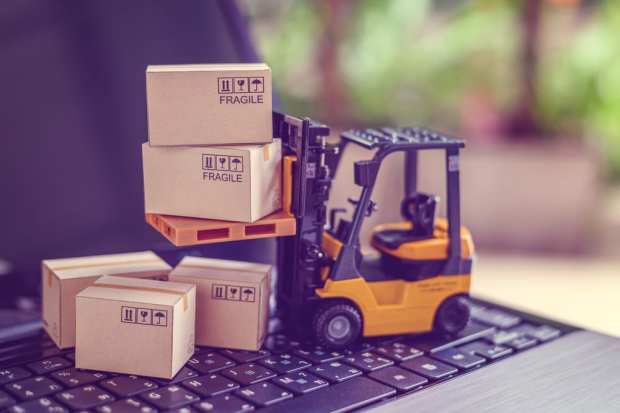The Digital Transformation Of Buyer/Supplier Dynamics — Beyond The Payment

Digitization has been changing — or has the potential to change — every facet of commerce.
The transformation has been most readily apparent in business-to-consumer (B2C) interactions, where omnichannel has been the rule of the day, and mobile apps let individuals schedule, for example, curbside pickup from their phones.
Digitization is also changing the business-to-business (B2B) landscape, where the pandemic has accelerated innovations to displace the firmly entrenched paper check and invoice. The rise of online platforms is only the latest iteration of a pivot in how companies get what they need from suppliers — as they seek out the best deal and transparent pricing.
In an interview with Karen Webster, Dr. Stefan Wuyts, professor and director of Institute for the Study of Business Markets at Penn State’s Smeal College of Business, said that the sweep of digitalization will not necessarily be all-encompassing.
We’ll still need a bit of face-to-face interaction, it turns out.
Blockchain may get its share of press and pilot programs (witness the case studies and the shipping companies, for example, latching on in recent months to distributed ledger tech to get across supply chains). The Internet of Things and sensors are ways to anticipate and automate ordering and fulfilment.
But as Wuyts noted, B2B eCommerce, at more than $1 trillion, is an industry that — pre-pandemic at least — uses manual means, sales calls and visits to get it all done.
One reason why? Sixty percent of B2B firms don’t even have a website. There’s been a bifurcation of firms embracing high tech and those that are firmly located on the low-tech spectrum.
Through the past few years, innovation has nibbled at the edges of B2B. Pricing has seen a variety of new approaches, he said, pointing to reverse auctions — where sellers bid for the prices at which they’ll part with goods and services. Only a few decades ago we saw the rise in buying hubs — which, through exchanges, seek to match supply and demand.
Today, “what we see now is the initiative is coming from online platforms,” said Wuyts. But when it comes to B2B, platforms are not the ultimate solution to solve all frictions.
But what seems a two-sided network on its face may actually mask a bit of imbalance in terms of power dynamic as some platforms are relatively more buyer oriented, others more supplier oriented.
“The basic logic is that ‘this platform will die’ if buyers say they are not coming or suppliers say they are not coming,” said Wuyts.
The platforms that work best are those that serve verticals tied to products that everybody needs — as might be seen in grocery retailing, for example, and bulk goods, where price competition is a hallmark. But as soon as buying groups desire to purchase a diverse group of products — some of which may be specific to certain regions or consumers — the scale advantage disappears.
“As soon as you’re trying to sell machinery to a manufacturing firm — it’s so customized that the only thing such a platform can do is make you aware that a certain supplier exists. But your transaction is not going to take place on the platform,” he said, which eliminates a key selling point of the platform itself.
Also, some limitations of online platforms can become illuminated within certain verticals.
“If you are part of a buying group in which you also have competitors and the same customer segments,” he continued, “then these benefits [of the buying groups and the online platforms] become significantly smaller.”
That’s because no one wants to reveal what they are purchasing, lest their competition find out, too.
Marketplaces, as they evolve, also can thrive or dive based on the trust factor, and online reviews, said Wuyts, where buyers want more value than comes simply with transacting at the lowest price.
What Lies Ahead
As to the premise that eCommerce is the next big thing in B2B, Wuyts contended that certain parts of the B2B continuum will benefit greatly from a great digital shift — maybe even those more important than paying for the purchase itself.
Moving digitization efforts further up the process is where value can be added, friction can be removed, and perhaps, even decisions can be accelerated.
When it comes to sheer transactions themselves — pulling the trigger to buy, say, aircraft parts — there’s no reason to think online clicks of a button won’t take root.
“The question is everything that precedes that,” Wuyts said.
Typically, everything leading up to the transaction has been heavy on actual in-person interactions — sales calls, conferences and lunches.
“How do you use digital technologies to generate new leads?” he asked. “Right now, firms have to go virtual.”
Trade shows may not come back (in fact, he said he thinks that they likely won’t). Discovery and market efforts will be driven by data analytics (though manufacturing firms, less advanced when it comes to digital efforts may lag here). Analytics will also play a role in risk analysis and scenario planning.
Face to face will come back — not throughout the B2B process — but will have a place alongside virtual interactions, contended Wuyts, all along the process.
In the end, behind every transaction, on each side of the equation, whether buyer or seller — lie actual people. And perhaps that is as it should be. Trust is not so easily built with robots.
